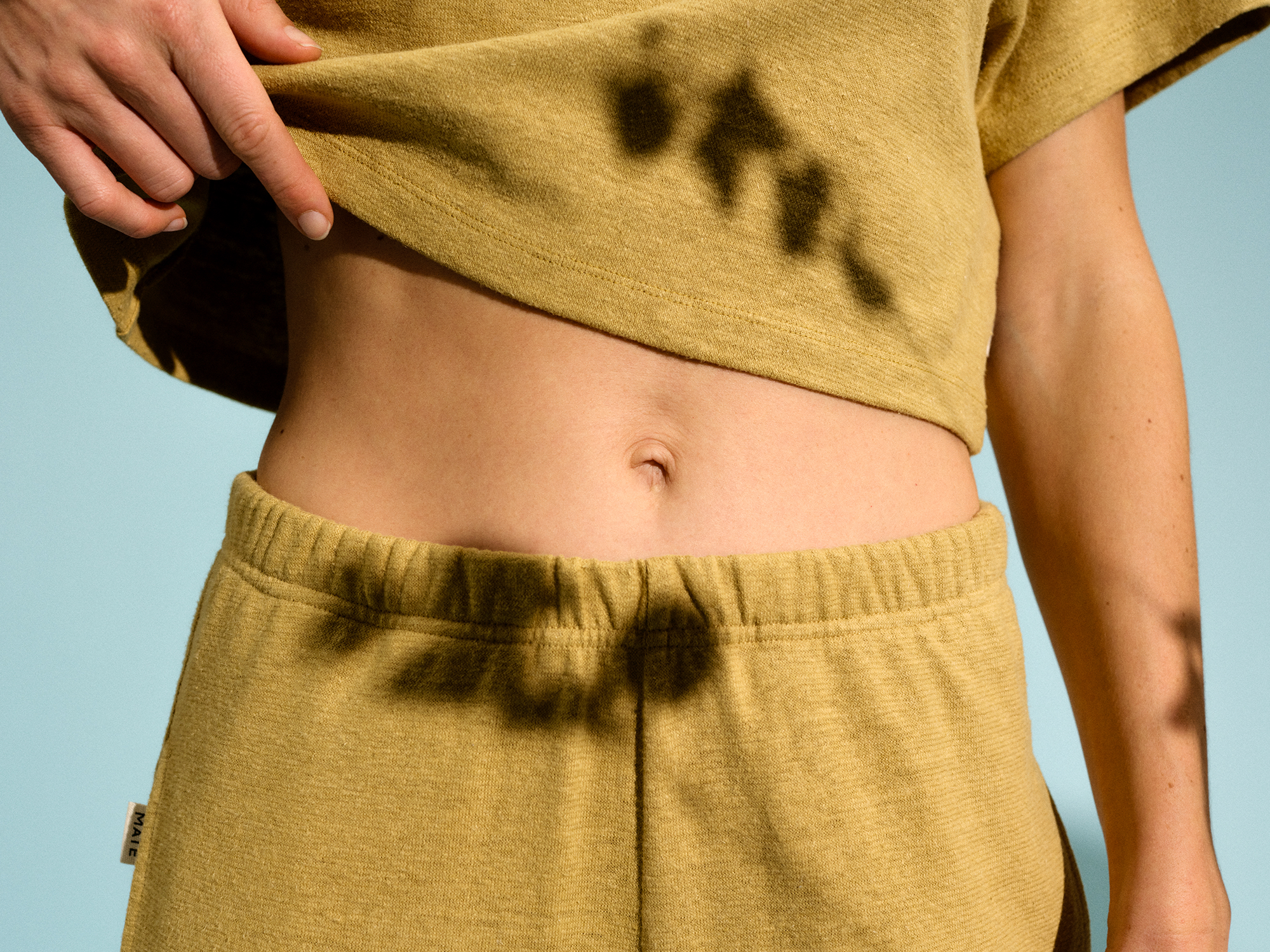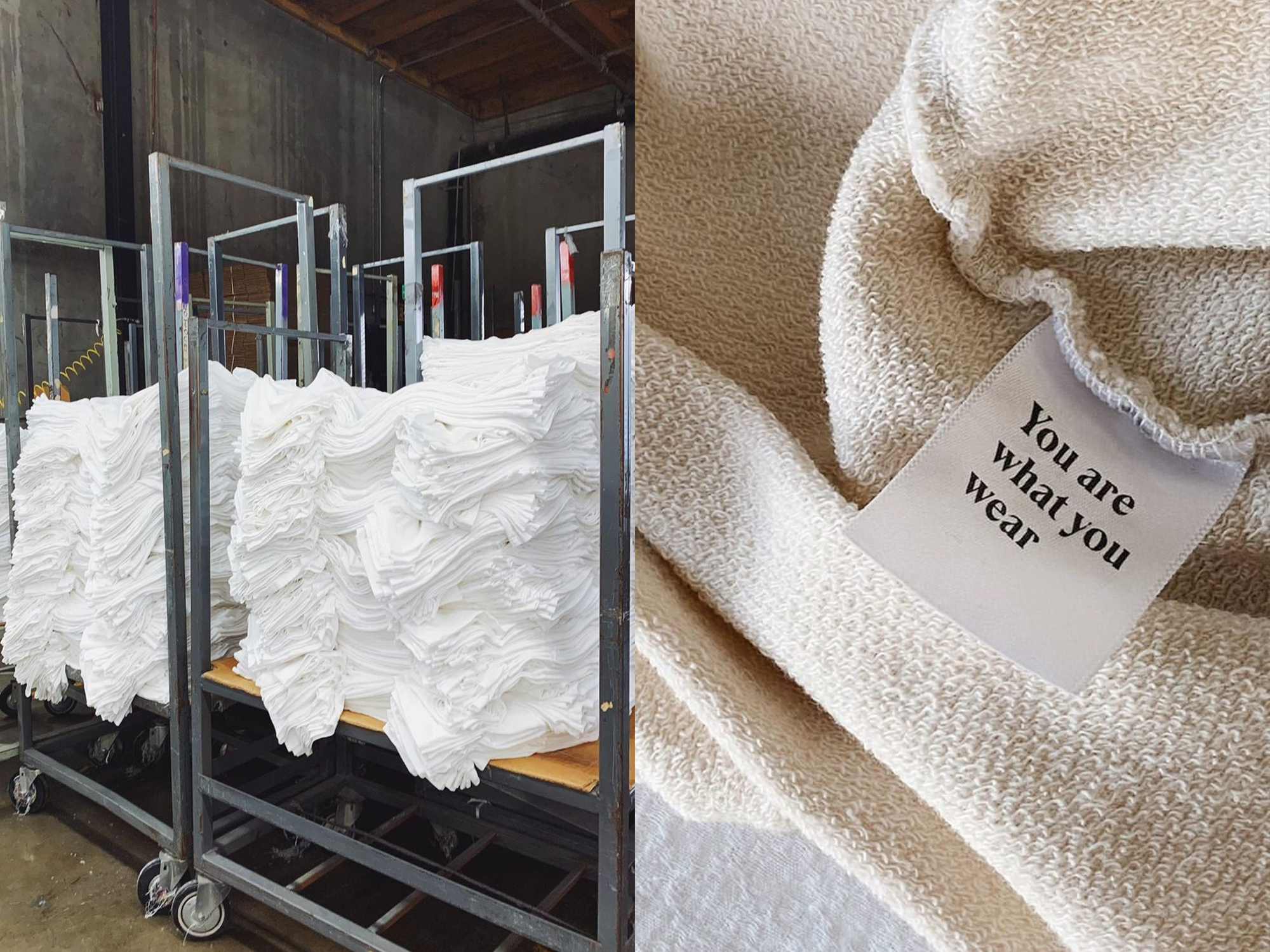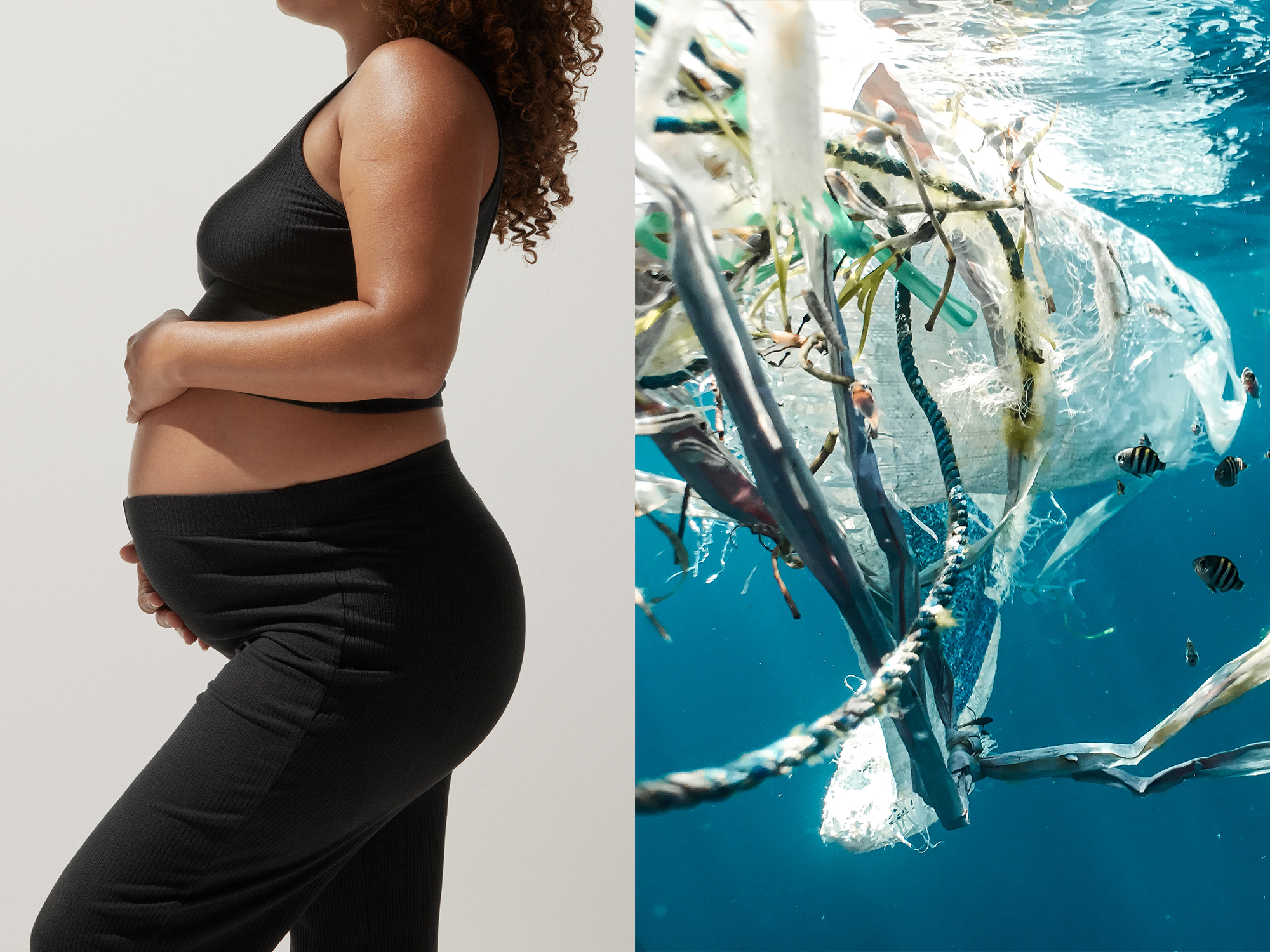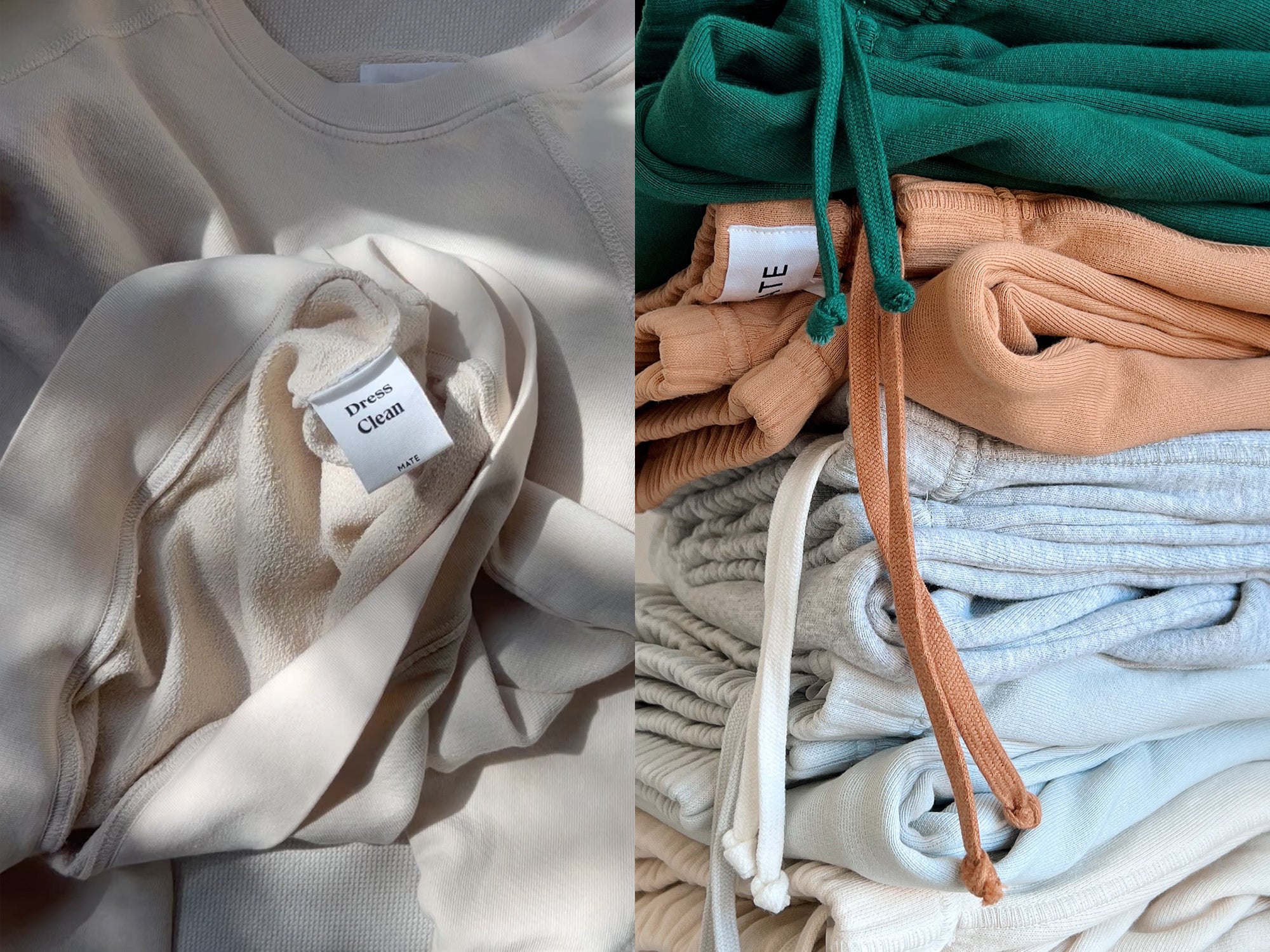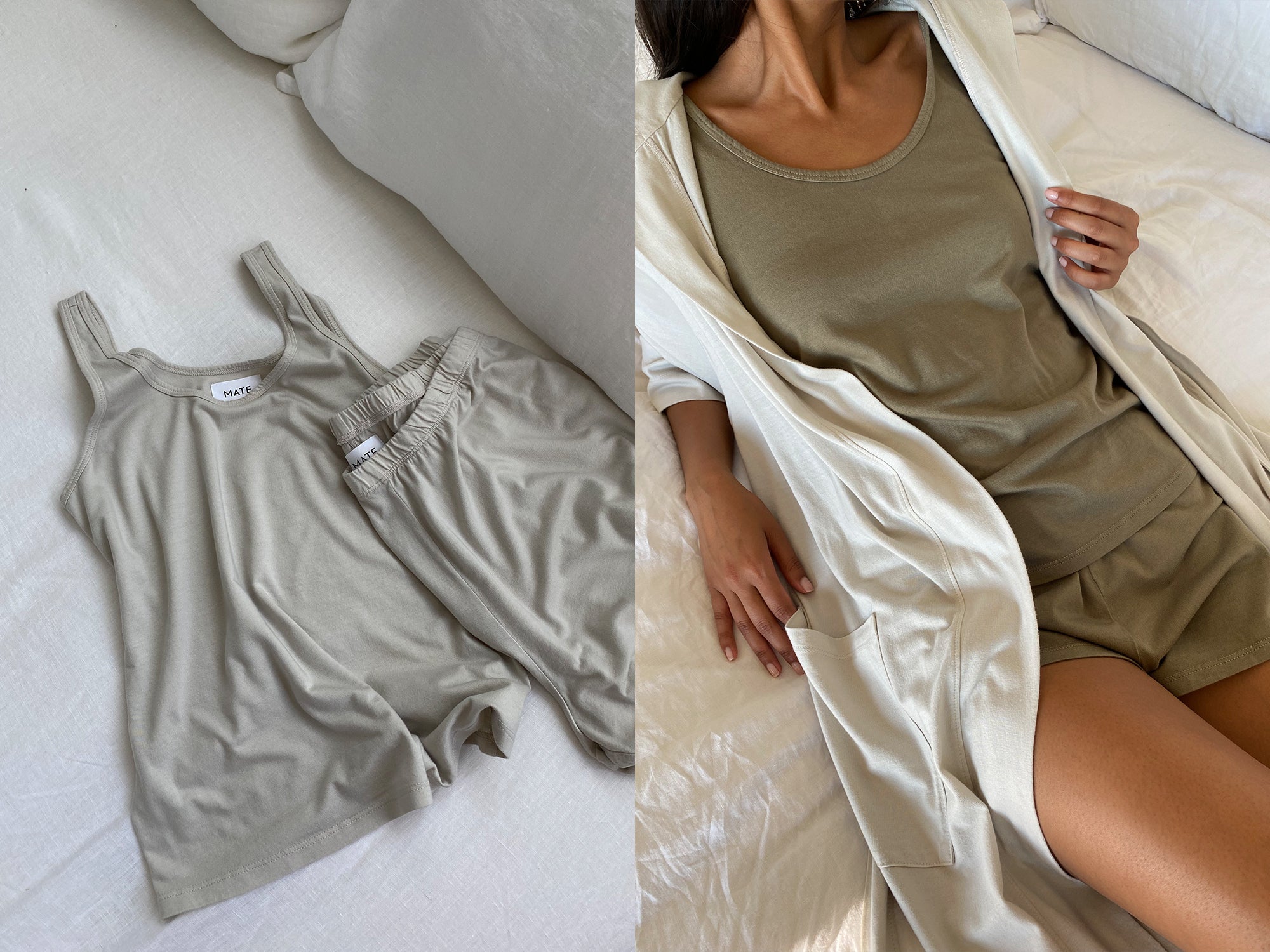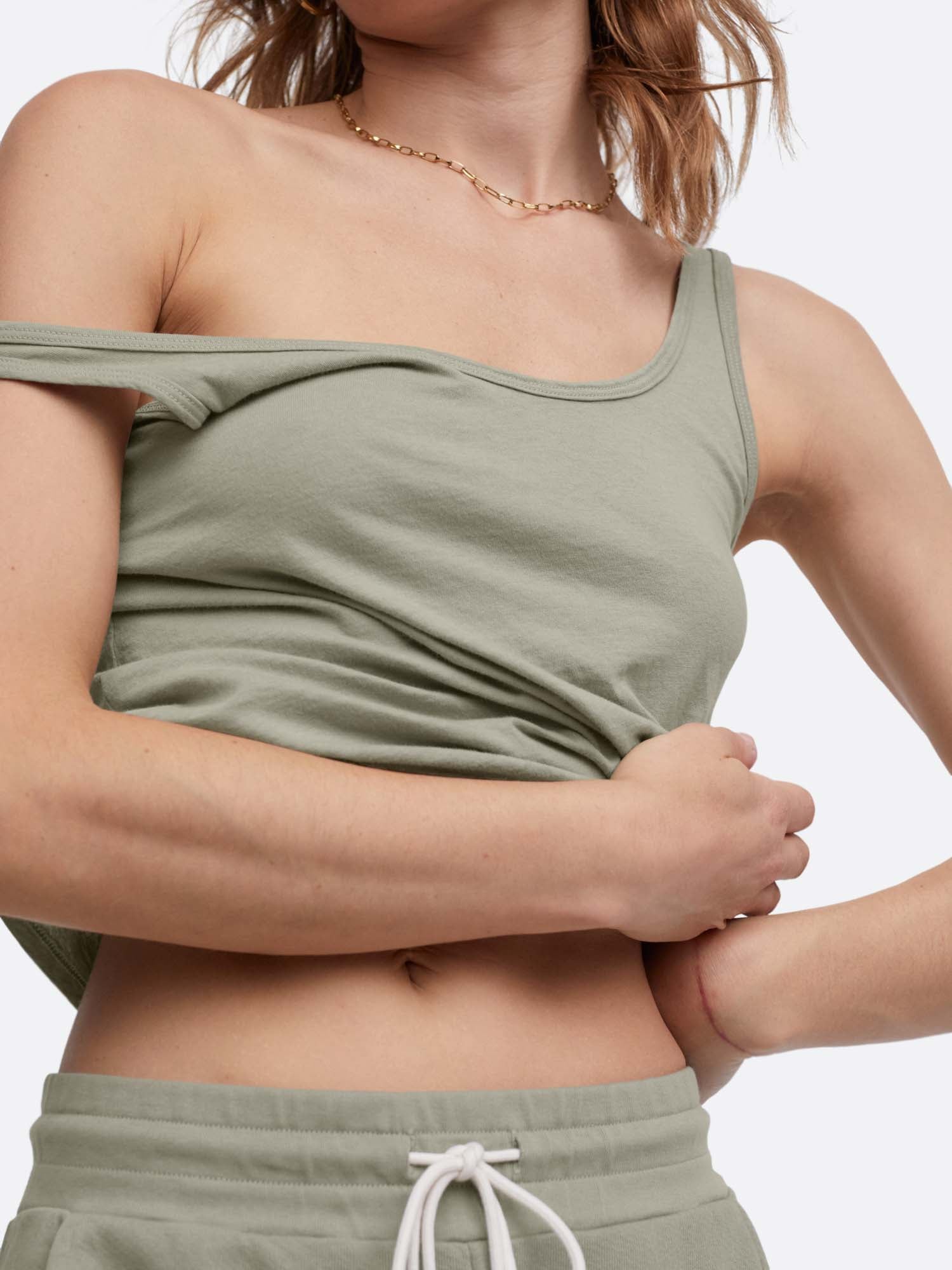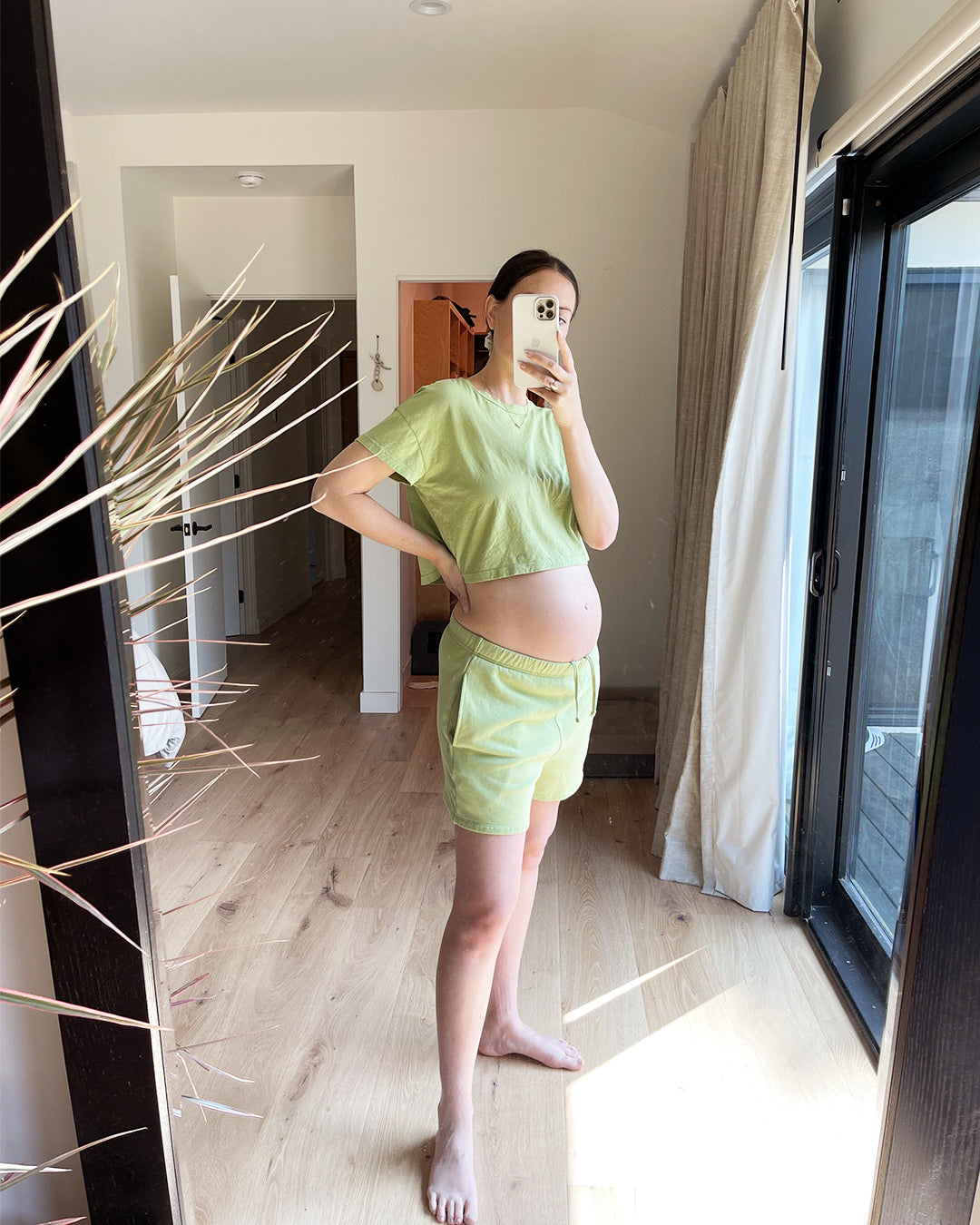Your Tote (0)
Organic Choices For You
Common Endocrine Disruptors Found in Fashion

Endocrine disruptors have been detected in fashion. What does this mean for your health?
Endocrine-disrupting chemicals (EDCs) are natural or man-made chemicals that may mimic, block, or interfere with the body’s natural hormones. They are prevalent in many items we regularly come into contact with such as cosmetics, food packaging, household items such as carpets, and - you guessed it - even clothing.
What purpose do they hold in clothing production, and what does that mean for your health? Read on to find out.
Why are endocrine disruptors in clothing?
Endocrine disruptors (EDs) can be found in various parts of clothing production. For example, plasticizers, such as Bisphenol-A (BPA), are incorporated into synthetic textiles to improve their performance, as well as give them moisture-wicking and anti-static properties, and help fix dyes to the fabric.
Why is this troubling? A 2018 study found that prolonged exposure to a chemical commonly used in clothing dyes called benzothiazole (BT) resulted in the uptake of BT into the body. Other studies have echoed these findings, raising a growing concern for the ability of chemicals to run off of fabrics into the body upon contact with the skin.
Other studies have echoed these findings, raising a growing concern for the ability of chemicals to run off of fabrics into the body upon contact with the skin.
Let’s take a closer look into what the specific endocrine disruptors in fashion are, how to avoid them, and what to wear instead.
What are the most common endocrine disruptors in fashion?
BPA
Utility in clothing production:
BPA is a key ingredient used to manufacture plastic, so it may be found in petrochemical-based synthetics, such as polyester or nylon. In the production of fabrics, it is used to improve their lifespan, give them moisture-wicking and anti-static properties, as well as help fix dyes to the fabric.
Type of clothing:
Toxic levels of BPA have been detected in sports bras and tops from 19 highly popular athletic wear brands. Items marketed as “moisture-wicking” or “anti-static”, may also include BPA, along with polyester or nylon.
Health risks:
BPA has been linked to a variety of health risks, from impacting fetal development to causing negative fertility effects in both men and women, delaying the onset of puberty in women and decreasing testosterone levels and causing erectile dysfunction in men.
Other research has focused on the impact BPA has on metabolic processes, linking exposure to obesity and insulin-resistance.
Lastly, BPA has also been linked to a higher incidence of breast and prostate cancer.
How to avoid BPA in fashion:
Swap out plastic-based fabrics (think: polyester, nylon, acrylic, and lycra) for certified Organic, plant-based products (such as, Organic cotton or Tencel - check out MATE’s Tencel line here). The lower percentage of synthetics and the higher the percentage of natural fibers, the better.
Avoid pieces marketed as ‘moisture-wicking’, as this may be indicative of the use of BPA to give the clothing this property.
PFAS
Utility in clothing production:
Poly and perfluoro-alkyl substances (PFAS, also known as “forever chemicals”) are used to make clothing waterproof/water-resistant and stain-resistant.
Type of clothing:
Due to PFAS ability to make fabrics waterproof, they can be found in sweat-proof workout wear and water-resistant outdoor clothing. PFAS have also been detected in infant clothing, as well as school uniforms.
PFAS can be found in both synthetic and natural-fiber clothing, as they are a treatment done to a fabric in clothing production to make them water-repellent or stain-resistant qualities.
Health risks:
The body is virtually unable to metabolize PFAS, meaning they remain in the body for years (hence the “forever” part). PFAS exposure has been linked to negative reproductive effects such as decreased fertility, reducing immune responses (including reduced response to vaccines) and increasing the risk of prostate, kidney, and testicular cancers. The disruption of lipid regulation leading to an increase in cholesterol levels, as well as impaired thyroid hormone levels upon PFAS exposure have also been found.
PFAS have also been linked to developmental effects or delays in children. These health risks in children are particularly concerning, as children have a lower body weight than adults and are more sensitive to these toxins during their developmental period.
PFAS also never break down in nature and therefore can bioaccumulate within organisms and make their way through the food chain.
How to avoid PFAS in fashion:
Avoid clothing marketed as “waterproof” or “stain-resistant”. In addition, the GOTS certification bans the use of PFAS, so look for pieces that are GOTS certified.
Phthalates
Utility in clothing production:
Phthalates are used in activewear and anti-odor clothing, printing inks, and processing. They are plasticizers added to polyvinyl chloride (PVC) plastics for softening effects, so they may be found in synthetic clothing. They can also be found in the packaging of clothing.
Types of clothing:
Similar to BPA, phthalates are plasticizers and therefore may be found in petrochemical-based synthetic fabrics (including many “vegan” leathers). However, they have also been detected in cotton pieces as it has been proven to absorb and hold onto phthalates circulating from indoor air sources.
Health risks:
Phthalates have a long list of health implications! They can bioaccumulate and negatively impact functions of the liver, thyroid, reproductive, nervous, and immune systems. They have also been shown to negatively impact the success of pregnancy, as well as result in poor semen quality.
Phthalates have been linked to negative impacts on child development. Compared to adults, infants are most susceptible to phthalates, due to the sensitivity of the body to all chemicals. Dermal exposure has been found to be the top route of infant exposure to phthalates; however, phthalates have also been detected in indoor air and dust particles from clothing dispersal.
Epidemiological studies have also linked phthalate exposure to type II diabetes and insulin resistance, overweight/obesity, allergy, and asthma.
How to avoid phthalates in fashion:
Similar to avoiding BPA, opt for certified Organic, plant-based fabrics to avoid phthalates. Avoid “anti-odor” marketed clothing, as well as pieces with printed logos.
In addition, phthalates may be in laundry detergents that list “fragrance” as an ingredient. Instead, choose fragrance-free alternatives.
Both the OEKO-TEX Standard 100 and GOTS certifications do not allow phthalates.
Pesticides
Utility in clothing production:
Pesticides are used to control unwanted insects and increase crop yield in conventional farming (non-Organic) processes. Conventional cotton production, for example, consumes 16% of all the insecticides worldwide - more than any other crop.
Types of clothing:
Pesticides have been used in non-Organic, plant-based fibers, such as conventional cotton. This can mean any item from a cotton t-shirt to sweatpants may have been treated with pesticides.
Health risks:
The active ingredients of synthetic pesticides that can kill harmful organisms can also be hazardous to the farmers directly caring for the crops, especially when they do not receive adequate protective measures and training. Contact with pesticides has been linked to diabetes, reproductive disorders, neurological dysfunction, cancer and respiratory disorders.
Consumers may be exposed to pesticides upon wearing conventional plant-based pieces (such as cotton) or through dietary and environmental exposure (water, soil, air) from conventional cotton farming. As it has been found that chemicals release off of fabrics and absorb into the body, this introduces the risk of the aforementioned health implications from pesticide contact to consumers, as well.
Pesticides can also accumulate in farm soil and pollute waterways in and near farms, contaminating water and food sources for nearby communities, as well as harming aquatic life.
How to avoid pesticides in fashion:
Look for pieces that are certified Organic, such as GOTS-certified. Opt for Organic, plant-based materials such as Organic cotton or Tencel. (Did you know? All MATE products are pesticide-free.)
Clothing that is certified by the OEKO-TEX Standard 100 is also pesticide-free.
Formaldehyde
Utility in clothing production:
Formaldehyde is used in the finishing process of clothing production to make the piece wrinkle-resistant, as well as resistant to mold, fix dyes to fabric, and for bleaching. It is used on both synthetic and natural fabrics to give them these properties.
Types of clothing:
Clothing marketed as “wrinkle-” or “mold-resistant” may have been treated with formaldehyde, as well as pieces that have been bleached or dyed with synthetic dyes.
Health risks:
Formaldehyde is a known carcinogen, according to the International Agency for Research on Cancer. Contact with this chemical by inhalation poses the highest health risk and can cause discomfort or nausea, irritation of the eyes, nose, and throat, and exacerbation of asthma.
Contact through wearing formaldehyde-treated clothing is most frequently associated with dermatitis, eczema, and allergic reactions.
How to avoid formaldehyde in fashion:
Instead of choosing wrinkle-resistant clothing, wear fibers that are naturally resistant to wrinkling, including wool, cashmere and lyocell. (p.s., MATE's new Alpaca fiber collection is a great place to start!)
In addition, washing clothing before wear may be a significant method for reducing formaldehyde content in clothing.
Clothing that is GOTS certified is free from formaldehyde.
Flame Retardants
Utility in clothing production:
Textiles may be treated with flame retardants in production to prevent or delay the spread of fire. This is done in furniture, such as mattresses, and clothing.
Types of clothing:
This is many times done in the production of plastic-based fabrics, but can also be found in natural fibers such as cotton, as well. Flame retardants have specifically been detected in infant clothing. The amount of flame retardants in synthetic fibers is often higher than that in cotton fabrics.
Health risks:
Flame retardants have been linked to adverse health effects including endocrine disruption, reproductive toxicity, neurotoxicity, hepatotoxicity, and cancer. Studies have also suggested risks to bone and brain health upon exposure, especially from exposure at a young age.
Exposure can be from airborne and dust particles, in addition to textiles. Flame retardants have also been detected in laundry wastewater, which raises a concern for their impact on aquatic environments.
How to avoid flame retardants in fashion:
Clothing that is GOTS-certified is free from flame retardants.
How can you avoid endocrine disruptors in fashion?
The easiest way to avoid endocrine disruptors in fashion is to opt for certified Organic, plant-based pieces, without finishes that make them water, stain, or sweat-resistant. In addition, sustainable fashion certifications such as GOTS and OEKO-TEX are a great place to start to look for endocrine disruptor-free clothing.
So, the next time you are shopping, opt for cleaner choice brands. Luckily, all of MATE’s clothing are free from any endocrine disruptors, so you can wear them with the confidence that you are choosing the healthiest option for your body!
More From The Journal
 female founded
female founded
Postcards from the Road: A Conversation with Yolo Journal’s Yolanda Edwards
Read more female founded
female founded
































